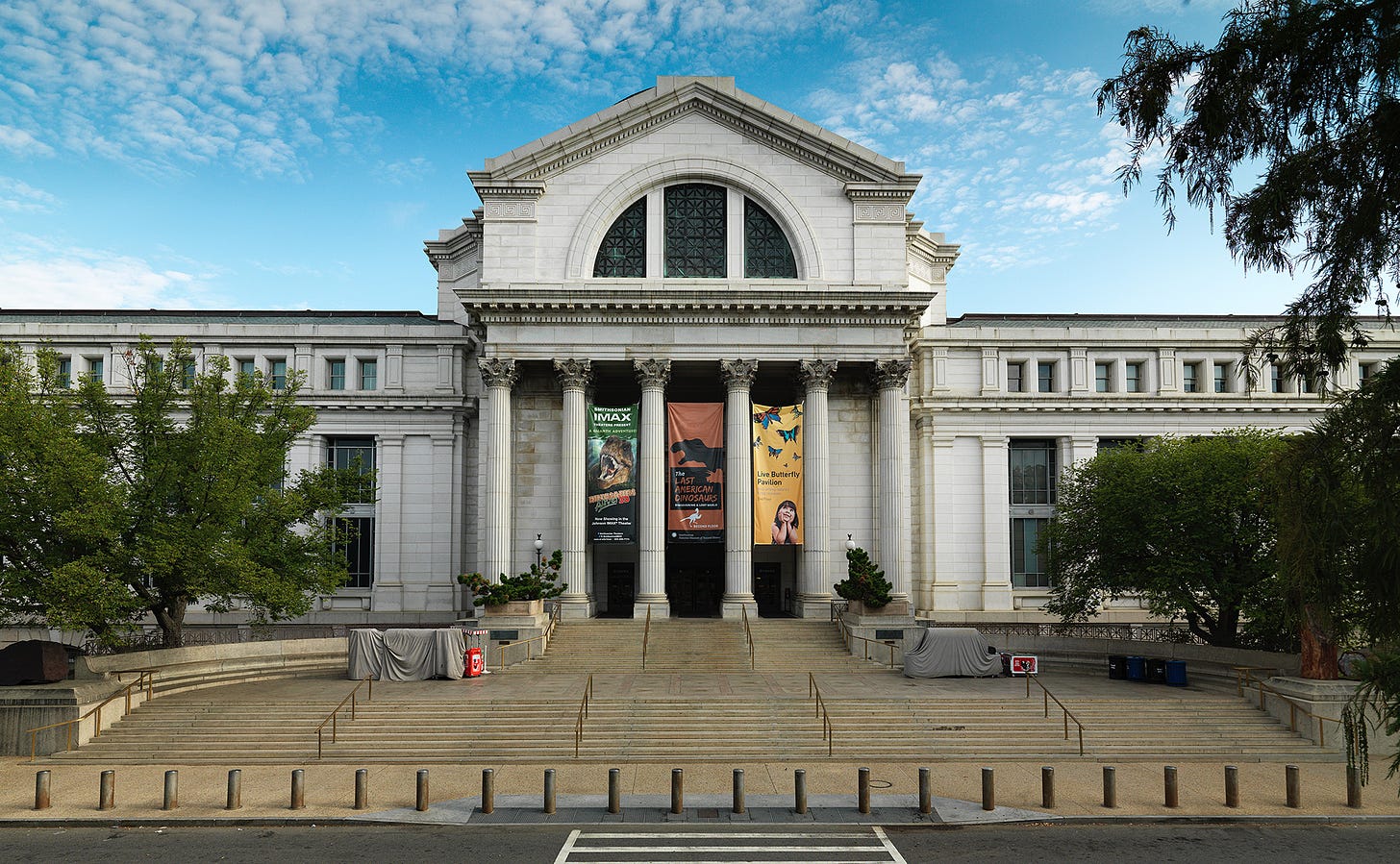The Smithsonian shut down its DEI office—when will it return the brains it took from Black people?
For decades, the Smithsonian stole and studied Black and Indigenous remains, fueling the very systemic injustices DEI was meant to address.
The Smithsonian recently announced the closure of its Office of Diversity in response to President Trump's executive order, calling DEI initiatives "illegal and immoral." This decision is especially notable given the institution’s own history of advancing racial pseudoscience, contributing to the very discrimination and stereotypes that make DEI efforts necessary today. One of the most disturbing examples of this legacy is the little-known history of its “racial brain collection.”
Ales Hrdlicka, a Czech-born anthropologist, led the Smithsonian’s Division of Physical Anthropology from 1904 to 1943. Widely regarded as the father of American anthropology, he was also a staunch proponent of racial hierarchies. Hrdlicka categorized humans into three broad racial groups—Black, White, and Yellow-Brown—and sought to further sub-classify them through brain studies, aiming to "prove" supposed racial differences and white superiority. His beliefs aligned with the American Eugenics Society, an organization that advocated for immigration restrictions and forced sterilizations to preserve a so-called “better” gene pool. Hrdlicka himself was a member of this group.
To amass his collection, Hrdlicka worked with prominent figures in the D.C. area, securing the brains of local Black residents, including children, after their deaths and without their consent. He expanded his reach globally, taking remains from Indigenous communities in the Philippines, Peru, and beyond. His research contributed to the pseudoscientific claims that justified racial discrimination, and his work reflected the broader American eugenics movement that influenced even Nazi policies.
Discover more about Hrdlicka’s collection in episode 1 of my new National Geographic series, Hidden History 👇🏾
The Ongoing Struggle for Repatriation
Although Hrdlicka died in the 1940s and the American eugenics movement largely faded from public favor, the Smithsonian still holds many of the remains he collected. As of late 2023, only five of the 255 brains in storage had been returned to families or descendant communities. The vast majority remain in institutional limbo, with no clear timeline for repatriation.
Under the Native American Graves Protection and Repatriation Act (NAGPRA), Indigenous remains must be returned to their rightful communities. However, no similar law mandates the return of remains taken from Black Americans or other racialized groups, leaving an estimated 15,000 body parts in legal uncertainty. The burden of initiating repatriation falls on descendants, most of whom are unaware their relatives’ remains were ever taken. This raises questions about how institutions should take responsibility for proactively addressing historical injustices.
The Smithsonian's Role and the Bigger Picture
The Smithsonian is not alone in reckoning with its legacy of human remains collections. Many museums and research institutions are confronting how science was historically tied to racism and colonialism. The DEI office’s closure raises questions about the institution’s commitment to equity, especially as it continues to hold remains acquired through exploitation.
DEI efforts exist to address these past injustices—many of which have been committed by institutions that are still operating today. Ales Hrdlicka’s racial brain collection was an attempt to create a scientific basis for racial hierarchy, which influenced eugenics policies, immigration restrictions, and the forced sterilization of marginalized people. Today, these institutions must now acknowledge and redress the harm they caused. This moment is an opportunity to reconsider not just the return of remains but also the institution’s broader commitments to accountability and historical justice.
References
Hrdlicka, Ales. Physical Anthropology: Its Scope and Aims; Its History and Present Status in the United States. Washington, D.C.: American Association for the Advancement of Science, 1919.
Reardon, Jenny. Race to the Finish: Identity and Governance in an Age of Genomics. Princeton, NJ: Princeton University Press, 2005.
Washington, Harriet A. Medical Apartheid: The Dark History of Medical Experimentation on Black Americans from Colonial Times to the Present. New York: Doubleday, 2006.
Smithsonian Institution. Annual Report of the Board of Regents of the Smithsonian Institution. Washington, D.C.: U.S. Government Printing Office, various years.
National Park Service. Native American Graves Protection and Repatriation Act (NAGPRA) Implementation Report. Washington, D.C.: U.S. Department of the Interior, 2023.
Lombardo, Paul A. Three Generations, No Imbeciles: Eugenics, the Supreme Court, and Buck v. Bell. Baltimore: Johns Hopkins University Press, 2008.
Duster, Troy. Backdoor to Eugenics. New York: Routledge, 2003.
Dungca, Nicole, and Claire Healy. "Revealing the Smithsonian’s ‘Racial Brain Collection’." The Washington Post, August 23, 2023.
Dungca, Nicole, and Claire Healy. "Smithsonian Targeted D.C.’s Vulnerable to Build Brain Collection." The Washington Post, December 14, 2023.








Great piece. The only building designed by Thomas Jefferson that was ever torn down at UVA was the anatomy theater, where they regularly dissected bodies of Black people stolen from graveyards. Jefferson and UVA have a sordid history in terms of actually applying their own principles of freedom and liberty, but in this case, even they couldn't keep up the charade.
What the Hell? This is a long shot, but I hope some of these entities are planning to do some of their DEI work undercover or under a different name. As a historian, this action by the Smithsonian is deeply troubling.